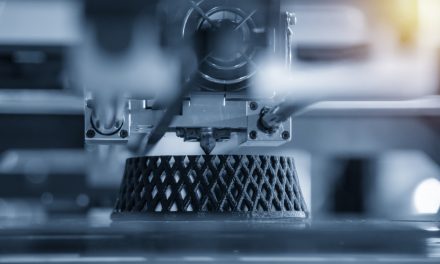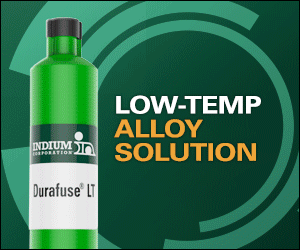Earlier Critical Cleaning Planning Leads to PCB Manufacturing Success

EMSNOW met with Tom Tattersall, MicroCare Chief Operating Officer, to get his take on current trends in the electronics industry in general and in printed circuit board assembly cleaning in particular.

He added that more companies are adopting cleaning protocols in direct response to PCBS getting smaller and more complex. “The industry is rapidly deploying miniature PCBs filled with tightly packed components. Denser spacing with harder-to-reach areas makes PCB cleaning extra challenging. If the contaminant isn’t cleaned, especially hard-to-clean white residue left behind from no-clean fluxes, the risk of the boards not functioning properly is high,” Tattersall explained. “Therefore, many companies are discovering the need to adopt a more proactive PCB cleaning protocol.”
Early Cleaning Fluid Specification & Testing
Tattersall is finding that many manufacturers are making their PCB cleaning choices much earlier in the development timeline than before. “Traditionally, many producers didn’t think about PCB cleaning until the very end of the design process. However, as boards become more complex, designers are quickly recognizing the need to specify critical cleaning fluids and their cleaning methods much earlier on,” Tattersall noted.
In addition to early fluid specification, testing is often being conducted earlier too. “Many manufacturers are starting to test-clean in small batches prior to full-scale manufacturing. They are finding it beneficial to produce and clean a small batch first, ensuring cleanliness before going into full production mode. Once the cleaning fluid and process are proven to work on a smaller scale, then they scale-up to the higher volume they need,” Tattersall explained. “Through small-batch preemptive testing, they are minimizing surprises and ensuring better board reliability before it becomes a major headache,” he said. “Customers often do their own testing in-house, but many are now relying on our MicroCare Critical Cleaning Lab to conduct comprehensive testing and cleaning trials on their parts to ensure their cleanliness.”
A Consultative Approach to Critical Cleaning
Tattersall is also seeing a growing trend of collaboration between PCB makers and cleaning fluid manufacturers. “Many manufacturers are inviting the MicroCare field engineers and chemists to join them at the research stage,” he explained. “Through on-site audits and in-lab cleaning trials, we work with our customers to carefully match MicroCare cleaning fluids to the contaminants they want to remove. Whether it be flux residues, marking inks, dust or fingerprint oils left on the boards, they understand that it is becoming more critical to match their cleaning fluid to the contaminant to get the PCB performance, reliability and longevity they expect.”
A Growing Desire for Contingency Planning
One additional trend that Tattersall is observing is the implementation of contingency planning. Some manufacturers want a secondary cleaning option, as a backup to their primary method, just in case something goes wrong. “Some PCB manufacturers are creating a ‘contingency plan’ for their cleaning operations with another qualified backup process,” Tattersall said. “For instance, those using aqueous systems are using solvent-based vapor degreasing as their backup plan in the event that they stop getting the cleanliness results they want with water. MicroCare is helping our customers put those plans in place by providing environmentally-progressive cleaning fluids that meet ever-evolving global regulations and can be used safely world-wide.”













